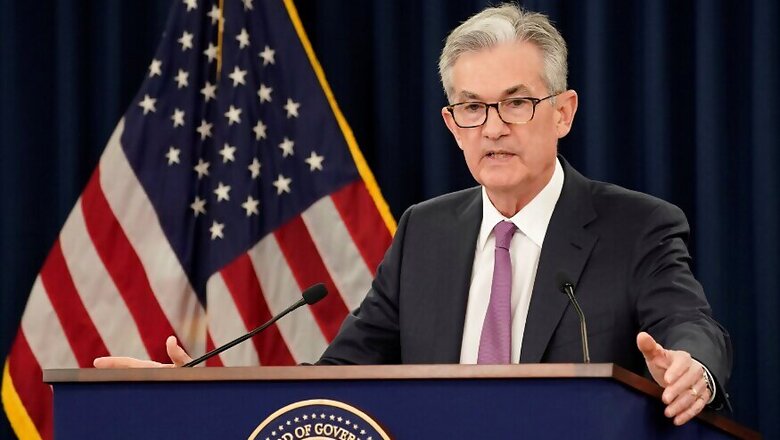
views
The US central bank cut its benchmark interest rate for the second time this year on Wednesday, and Federal Reserve chief Jerome Powell vowed to do whatever is needed to keep the economy growing.
But the Fed's policy committee is divided, with three of 10 voting members dissenting from the decision, one because he wanted even more stimulus.
Powell said policymakers do not expect a recession, but trade uncertainty is creating "cross winds" that are weighing on the economy amid President Donald Trump's conflict with China.
Although consumer spending remains strong, "trade uncertainty is having an effect. You see it in weak business investment, weak exports," Powell told reporters, stressing the Fed will "will act as appropriate to sustain the expansion."
The Fed's policy-setting Federal Open Market Committee (FOMC) lowered the policy interest rate by 25 basis points to a target range of 1.75 to 2.0 percent, as expected. With that second rate cut, it has now pulled back on half of the four interest rate increases it implemented in 2018.
While officials continue to believe the most likely outcome is for the economy to continue to grow and inflation to gradually increase, "uncertainties about this outlook remain," the FOMC said in a statement.
Trump wasted no time in slamming the Fed on Twitter -- continuing his relentless campaign to pressure the central bank to provide additional stimulus to the economy.
"Jay Powell and the Federal Reserve Fail Again. No 'guts,' no sense, no vision! A terrible communicator!"
But Powell again refused to be drawn into the conflict, saying, "I assure you that my colleagues and I will continue to conduct monetary policy without regard to political considerations."
- Divided committee -
Powell's position is complicated by the clear division on the committee: one member, St Louis Fed's James Bullard, wanted an even steeper rate cut, while two others -- Kansas City's Esther George and Boston's Eric Rosengren -- opposed cutting rates at all, as they did in July.
The Fed's quarterly economic forecast also reflects the division among central bankers, as the median forecast calls for no further rate increases through the end of 2020 -- holding at 1.9 percent down from 2.4 percent in the June forecasts.
That contradicts most private economists who expect the central bank will feel the need to provide at least one more reduction in interest rates in 2019.
But it reflects the fact that five members expect or prefer a rate hike, five see no change, and seven forecast or want to see another rate cut.
And that division comes even as the forecasts for growth and unemployment are about steady, with inflation gradually rising to the Fed's target of two percent.
Powell said it is "healthy to have diverse perspectives," but he also stressed that it would be "a mistake to try to hold on to your fire power until a downturn gains momentum."
Still, he said the committee is primarily focused on incoming economic data to gauge what the next move should be.
Economist Diane Swonk of Grant Thornton said Powell was careful not the make a commitment on the next steps, calling him the "Artful Dodger."
But she said developments in the trade conflict and the fallout from Brexit could prompt the Fed to move or hold depending on how things play out.
"Powell dodged all questions that might lock the Fed into any future actions," she said in an analysis, noting that she expects one more rate cut this year.
But in fact he did say he is "prepared to be aggressive" if the economy weakens more, and admitted that the Fed faces a "challenging time" when "trade developments have been up and down and back up."
The central bank will "need to look through what's a pretty volatile situation. That means, not overreacting quickly, it means not underreacting too. That's what we're trying to do."
But the Fed has "a very powerful tool which can counteract weakness to some extent."




















Comments
0 comment